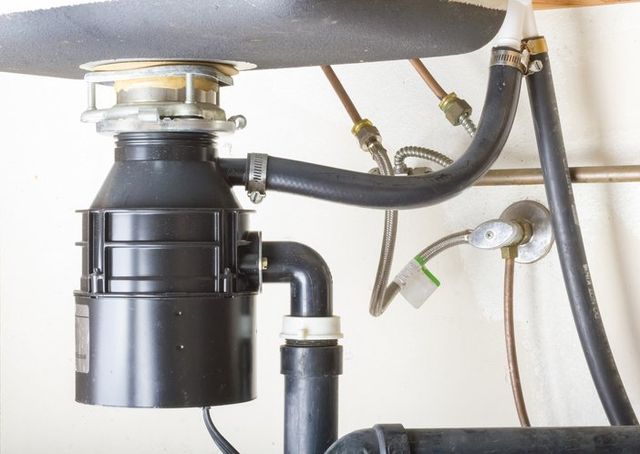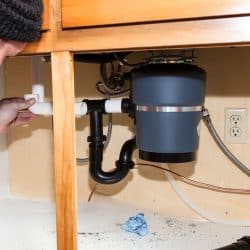Verified Solutions for Fixing a Dripping Garbage Disposal
Verified Solutions for Fixing a Dripping Garbage Disposal
Blog Article
We have stumbled on this great article about Tips on Fixing a Leaking Garbage Disposal down the page on the web and reckoned it made good sense to relate it with you on this page.

Waste disposal unit are important cooking area devices that aid in getting rid of food waste effectively. Nevertheless, a leaking waste disposal unit can be a frustrating and messy problem to manage. Fortunately, several leakages can be repaired conveniently with a few easy steps. In this post, we will certainly go over just how to deal with a dripping garbage disposal effectively.
Introduction
Waste disposal unit are set up under kitchen sinks and are made to shred food waste right into smaller items, permitting it to go through the pipes system quickly. While these tools are typically trusted, leakages can take place in time as a result of deterioration, loose connections, or damage to the device.
Typical Reasons For Leaks in Garbage Disposals
Worn Seals and Gaskets
Seals and gaskets play an essential duty in stopping water from leaking out of the waste disposal unit. In time, these parts can degrade, resulting in leakages around the disposal unit.
Loose Connections
The connections in between the waste disposal unit and the pipes system can become loose gradually, causing water to leak out throughout procedure.
Splits or Openings in the Disposal Device
Physical damages to the garbage disposal, such as cracks or holes in the real estate, can additionally result in leaks.
Determining the Resource of the Leakage
Before attempting to take care of a dripping waste disposal unit, it is vital to determine the source of the leakage. This can normally be done through aesthetic assessment or by carrying out basic tests.
Visual Assessment
Evaluate the waste disposal unit unit very carefully for any type of indications of water leakage. Pay close attention to areas around seals, gaskets, and connection points.
Evaluating for Leakages
One way to evaluate for leaks is by running water through the disposal system and looking for any type of noticeable signs of leakage.
Devices and Products Needed for Dealing With a Dripping Waste Disposal Unit
Prior to beginning the repair procedure, collect the essential devices and products, including a screwdriver, flexible wrench, plumbing's putty, replacement seals or gaskets, and epoxy or patching product for repairing fractures or openings.
Step-by-Step Guide to Dealing With a Leaking Garbage Disposal
Turn Off the Power
Before trying any type of fixings, make sure that the power to the waste disposal unit unit is turned off to prevent the danger of electric shock.
Locate the Leak
Identify the exact area of the leakage and figure out the cause.
Tighten Connections
Make use of a wrench to tighten any loose links in between the disposal device and the plumbing system.
Replace Seals or Gaskets
If the leakage is due to worn seals or gaskets, remove the old components and change them with brand-new ones.
Patching Fractures or Openings
For splits or openings in the disposal device, usage epoxy or an ideal patching material to secure the broken area.
Checking the Waste Disposal Unit After Repair Work
When the fixing is complete, test the garbage disposal by running water with it to make sure that the leakage has actually been settled.
Preventive Upkeep Tips to Stay Clear Of Future Leaks
To prevent future leaks, it is essential to carry out regular maintenance on your waste disposal unit. This consists of maintaining it clean, avoiding placing non-food things or difficult objects down the disposal, and periodically looking for leaks or other concerns.
Final thought
In conclusion, fixing a dripping garbage disposal is a reasonably uncomplicated procedure that can be completed with fundamental tools and products. By following the steps outlined in this post and exercising precautionary upkeep, you can keep your garbage disposal in good working problem and avoid expensive repair work in the future.
What to Do About a Leaking Garbage Disposal
A leaking garbage disposal often goes unnoticed until you confront a sopping cabinet, a foul-smelling puddle, or an audible drip-drip-drip from the unit. The fix can be frustrating, too, because the leak can stem from a number of components in the system. Fortunately, with a little sleuthing, you can zero in on the leak and—depending on the exact location—stop the icky oozing and repair the component that caused it. Worst case scenario, if it turns out that the garbage disposal must be replaced, installing a new one is a reasonable do-it-yourself task for those with basic plumbing skills. Read on to keep the cash you’d otherwise hand over to a pro.
Prepare to find the leak
Prior to testing the garbage disposal for leaks, unplug it at the wall outlet and turn off the power from the breaker box to prevent electrical shock. Then insert a watertight sink stopper into your sink drain and wipe the unit dry with a clean cloth. In any handy container, mix a few drops of food coloring into a few cups of water, and pour the dyed water onto the sink stopper to help you locate the leak.
Investigate the source
the top, where the disposal meets the sink drain the side, where the dishwasher hose or main drain pipe connects to the disposal or the bottom of the unit Inspect each of these locations while gliding a light-colored rag over the unit; the dyed water will readily show on the rag and reveal the location of the leak. If a leak isn’t immediately apparent, remove the sink stopper and pour a few more cups of dyed water down the sink drain, then check for leaks again. Leaks near the top of the unit are more likely to show themselves while the sink is plugged, while side and bottom leaks are more noticeable while the sink is unplugged.
The metal sink flange that sits directly inside the sink drain is typically sealed around the top with plumber’s putty (a clay-like sealant) and then secured from under the sink with bolts. If the plumber’s putty deteriorates, or the bolts loosen, the flange can no longer form a watertight seal between the sink drain and the disposal—which could cause a leak at the top of the unit.
To reseal the leaky flange, you must first detach the garbage disposal. Start by loosening the screws securing the main drain pipe to the disposal, then loosen the screws in the metal clamp securing the dishwasher hose to the disposal and detach the drain pipe and dishwasher hose from the disposal. Loosen the screws in the mounting ring that connects the disposal to the metal mounting assembly beneath the sink, then pull down the disposal and carefully set it on a clean, dry surface. Loosen the bolts in the mounting assembly with a wrench, then pull down the mounting assembly and set it near the disposal.

We hope you liked our topic on Why Is . Thank you for taking time to read through our short article. Sharing is caring. You never know, you may be doing someone a favor. Many thanks for your time. Come back soon.
Call Today Report this page